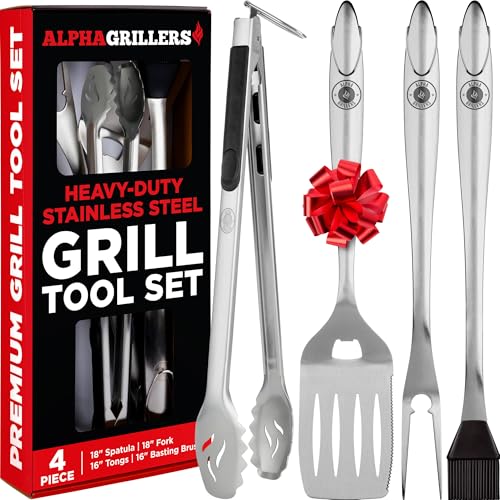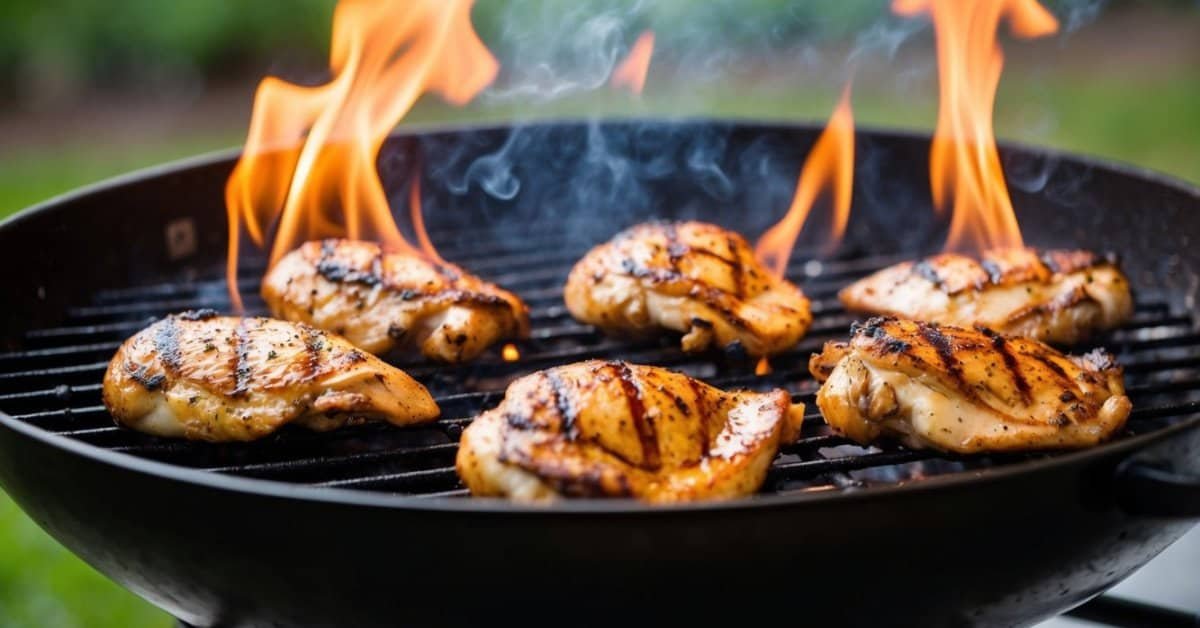Grilling is one of my favorite ways to cook, but nothing beats the frustration of uneven heat ruining the perfect meal. I’ve learned that maintaining consistent grill temperatures is key to achieving those mouthwatering results every time.

Whether you’re a seasoned grill master or just starting out, understanding how to control your grill’s heat can make all the difference. I’ll share some of my top tips and tricks to help you keep that flame steady and your food deliciously cooked.
With a few simple adjustments, you’ll be able to tackle any grilling challenge with confidence and enjoy perfectly grilled meals all summer long.
Importance Of Maintaining Consistent Grill Temperatures
Consistent grill temperatures are crucial for achieving optimal cooking results. They ensure that food cooks evenly, preventing hotspots that can lead to undercooked or burnt areas. For example, steaks benefit from steady heat to develop a perfect sear while remaining juicy inside.
Maintaining uniform temperatures enhances flavor development. Proper Maillard reactions occur when proteins and sugars interact at consistent heat levels, creating rich, savory tastes. This consistency is essential for dishes like hamburgers and vegetables, where balanced flavors are key.
Food safety relies on maintaining appropriate grill temperatures. Cooking meats to specific internal temperatures eliminates harmful bacteria, ensuring meals are safe to consume. Using a reliable thermometer helps monitor these critical levels accurately.
Efficiency in grilling is another advantage of consistent temperatures. Predictable heat allows for precise cooking times, reducing the likelihood of overcooking and minimizing the need for constant adjustments. This reliability makes meal planning smoother and grilling sessions more enjoyable.
Lastly, consistent temperatures enable repeatable results. Whether you’re grilling for family or guests, achieving the same high-quality outcome every time builds confidence and enhances the overall grilling experience.
Types Of Grills And Temperature Control
Different grills offer various methods for maintaining consistent temperatures. Understanding each type helps achieve optimal cooking results.
Gas Grills
Gas grills use propane or natural gas, providing precise temperature control through adjustable burners. I can easily set specific heat levels, allowing for quick adjustments while cooking. Features like side burners and built-in thermometers enhance temperature management, ensuring even heat distribution across the grill surface.
Charcoal Grills
Charcoal grills rely on charcoal briquettes or lump charcoal, requiring more attention to maintain steady temperatures. I manage heat by adjusting the charcoal arrangement and controlling airflow with vents. Using a charcoal chimney starter ensures an even burn, while adding or removing coals allows me to fine-tune the temperature as needed for different cooking stages.
Electric Grills
Electric grills offer straightforward temperature control with built-in thermostats. I can set and maintain desired temperatures without the need for fuel adjustments. These grills are ideal for environments with restrictions on open flames, providing consistent heat distribution and easy cleanup. Features like non-stick surfaces and removable drip trays further simplify temperature management.
Essential Tools For Temperature Management
To maintain consistent grill temperatures, having the right tools is crucial. These tools help regulate heat and ensure your food cooks evenly.
Grill Thermometers
Accurate grill thermometers provide real-time temperature readings, allowing precise adjustments. I use both built-in and instant-read thermometers to monitor grill and food temperatures. Digital models offer quick, reliable measurements, while analog ones are durable and battery-free. Positioning the thermometer correctly ensures you track hotspots and maintain uniform heat across the grill surface.
Heat Shields And Deflectors
Heat shields and deflectors manage direct heat exposure, preventing flare-ups and uneven cooking. I place heat shields between burners and food to create indirect cooking zones, ideal for larger cuts and delicate items. Deflectors distribute heat more evenly, reducing hot spots and promoting consistent temperatures. Using these accessories enhances airflow control, making it easier to maintain steady heat levels throughout the grilling process.
Techniques For Stabilizing Grill Heat
Maintaining stable grill heat ensures your food cooks evenly and tastes great. Here are key techniques to achieve consistent temperatures.
Proper Ventilation
Proper ventilation controls airflow and directly affects grill temperature. By adjusting vents, I regulate heat by increasing oxygen for higher temperatures or decreasing it for lower ones. I typically:
- Open intake vents to boost oxygen flow
- Adjust top vents to balance heat distribution
- Keep vents clear of debris to ensure consistent airflow
Managing ventilation accurately helps me maintain steady temperatures and prevent flare-ups.
Fuel Management
Effective fuel management ensures a reliable heat source. Whether using charcoal, gas, or wood, managing fuel properly stabilizes grill temperatures. I usually:

- Arrange charcoal evenly for uniform heat in charcoal grills
- Control burner settings precisely on gas grills
- Choose high-quality fuel to avoid temperature fluctuations
« Delicious BBQ Flatbread with Caramelized Onions Recipe – Easy & Flavorful
Temperature Control 101: Grilling Basics for Perfect BBQ Every Time »
Consistent fuel management allows me to keep the grill temperature stable throughout the cooking process.
Common Challenges And Solutions
- Temperature Fluctuations
Maintaining steady heat often varies due to fuel inconsistencies or external factors. Implementing a reliable fuel management system and using heat shields can stabilize temperatures effectively.
- Inconsistent Fuel Supply
Uneven fuel distribution disrupts heat consistency. Arrange charcoal uniformly or regulate gas burners evenly to ensure a constant fuel source, which maintains stable grill temperatures.
- Poor Ventilation Control
Inadequate airflow leads to temperature instability. Adjusting grill vents properly manages oxygen flow, allowing precise temperature regulation and preventing unexpected heat spikes.
- Incorrect Grill Setup
Improper setup causes uneven heating zones. Position coals or burners strategically to create balanced heat areas, ensuring even cooking across the grill surface.
- Weather Conditions
Wind and ambient temperature affect grill performance. Using windbreaks and positioning the grill in a sheltered area can mitigate weather impacts, maintaining consistent cooking temperatures.
- Thermometer Inaccuracy
Faulty thermometers provide misleading temperature readings. Investing in high-quality, reliable grill thermometers ensures accurate monitoring and better temperature control.
- Fuel Quality Variations
Low-quality fuel burns inconsistently, affecting grill temperatures. Choosing high-grade charcoal or gas improves burn stability, contributing to reliable heat maintenance.
Tips For Achieving Optimal Grilling Results
To achieve optimal grilling results, implement these strategies:
Preheat Your Grill
Preheating ensures even heat distribution. I preheat my grill for 15 minutes before cooking to stabilize the temperature.

Use an Accurate Thermometer
Monitoring the grill temperature is essential. I use a digital grill thermometer for real-time readings.
Manage Direct and Indirect Heat
Creating heat zones improves cooking control. I set up direct and indirect areas by adjusting burners or arranging charcoal accordingly.
Keep the Lid Closed
Maintaining consistent temperature requires keeping the lid closed. I avoid frequent opening to prevent heat loss.
Clean the Grill Grates Regularly
Clean grates promote even cooking. I brush the grates before and after each use to remove residue.
Control Airflow
Adjusting vents regulates temperature. I fine-tune the airflow based on the cooking needs to maintain steady heat.
Use High-Quality Fuel
High-quality fuel ensures reliable heat. I select premium charcoal or propane to achieve consistent temperatures.
Monitor Weather Conditions
Weather affects grilling performance. I use windbreaks and adjust cooking times during windy or cold conditions.
Rest Cooked Meats
Allowing meats to rest enhances flavor and texture. I let them sit for a few minutes after grilling before serving.
Conclusion
Maintaining consistent grill temperatures has made all the difference in my grilling adventures. It not only ensures my food cooks evenly but also brings out the best flavors every time.
By understanding your grill’s temperature control and using the right tools you can tackle any grilling challenge with confidence. Whether you’re a seasoned pro or just starting out these strategies can help you create delicious meals that impress.

Grilling should be enjoyable and stress-free. With these tips I’m sure you’ll have perfectly grilled dishes that make your gatherings memorable all summer long.















